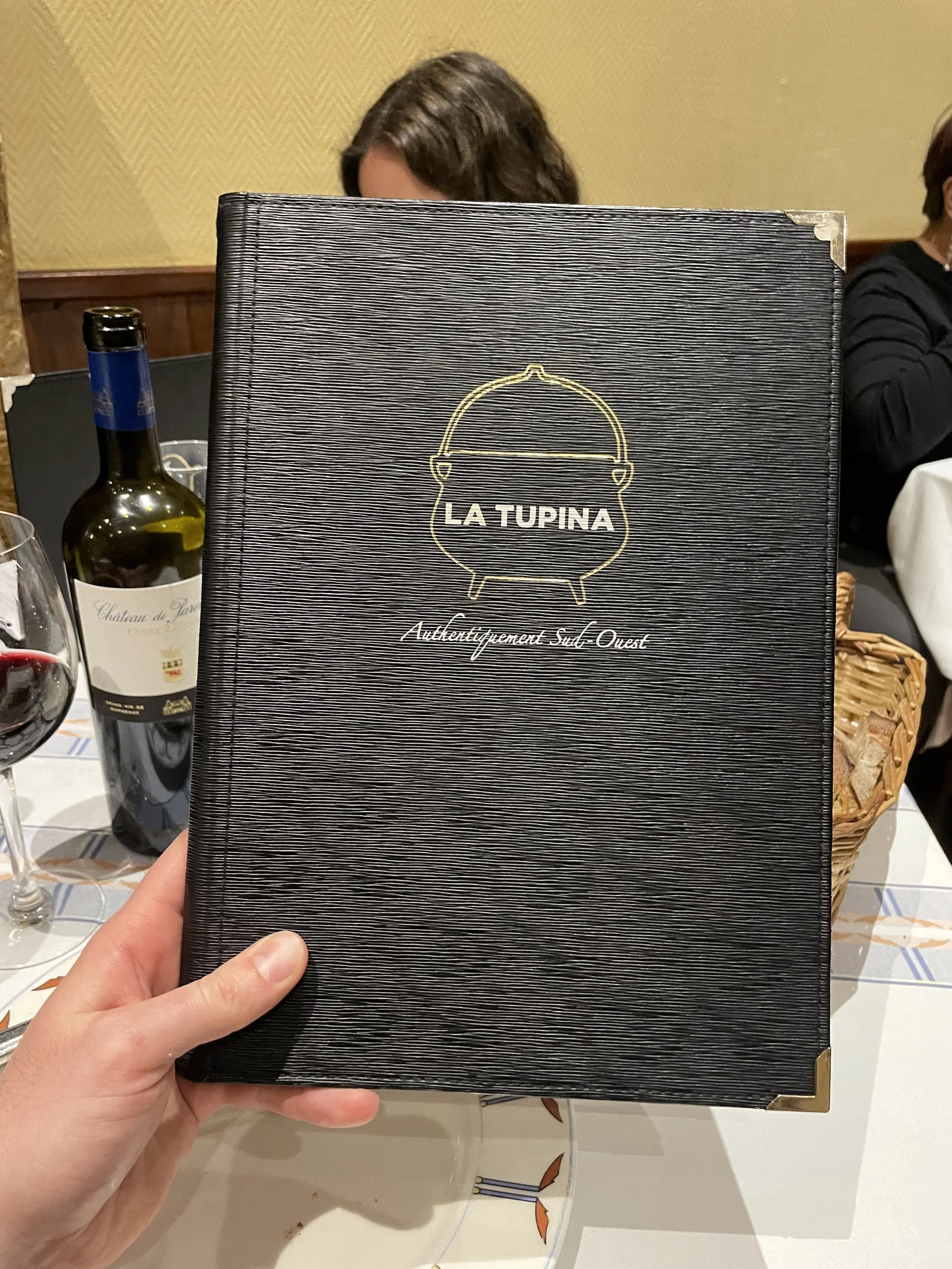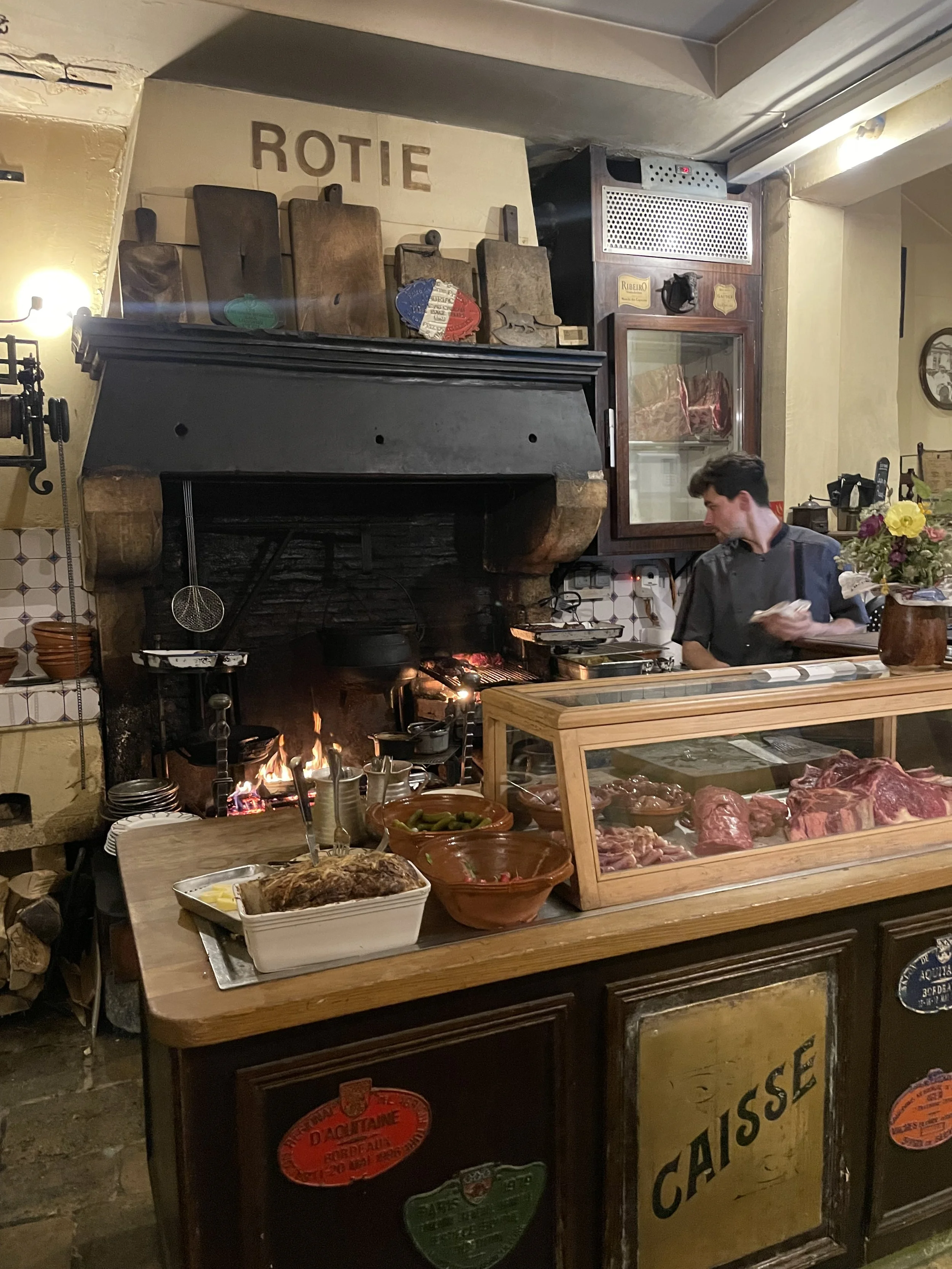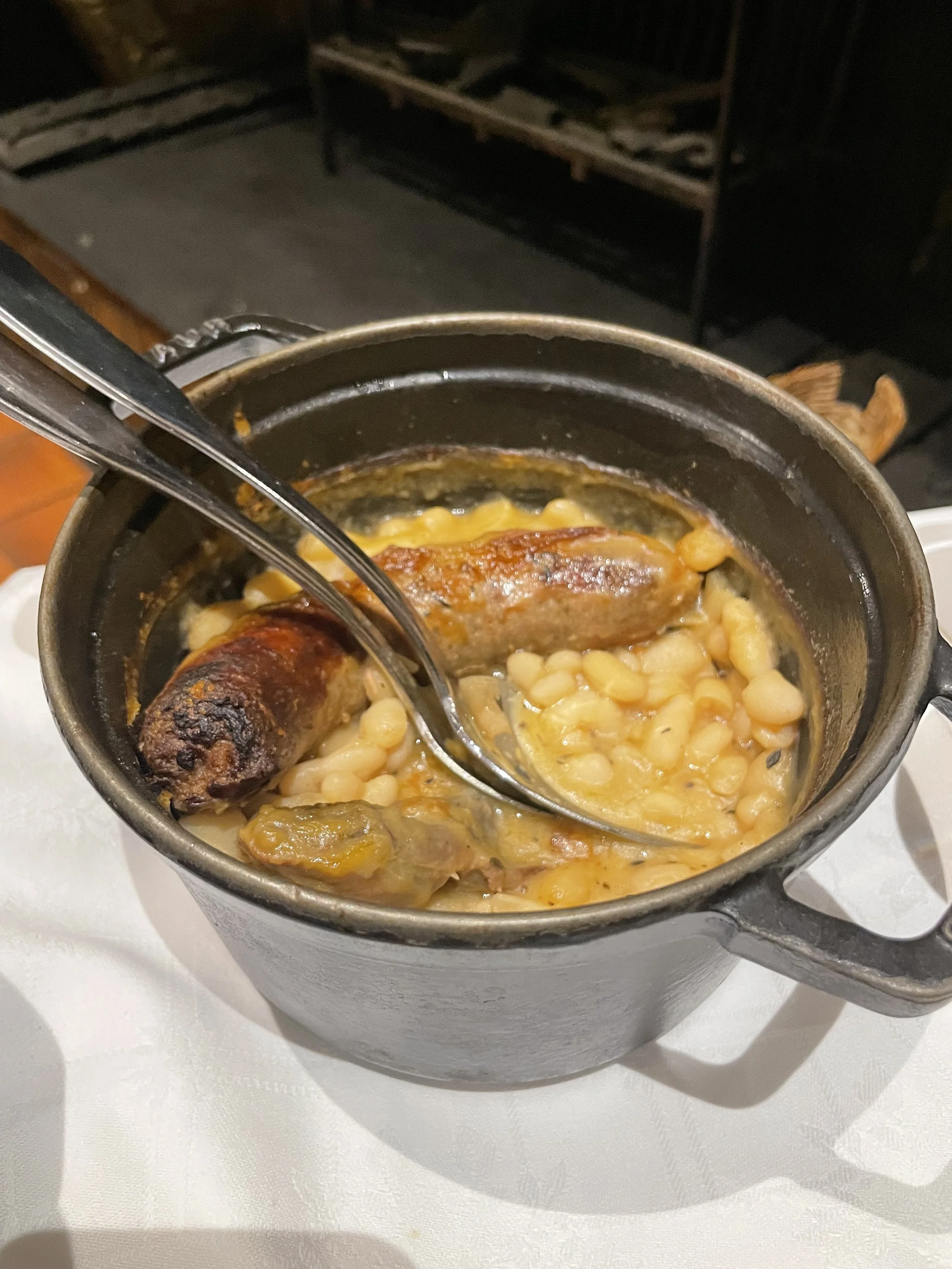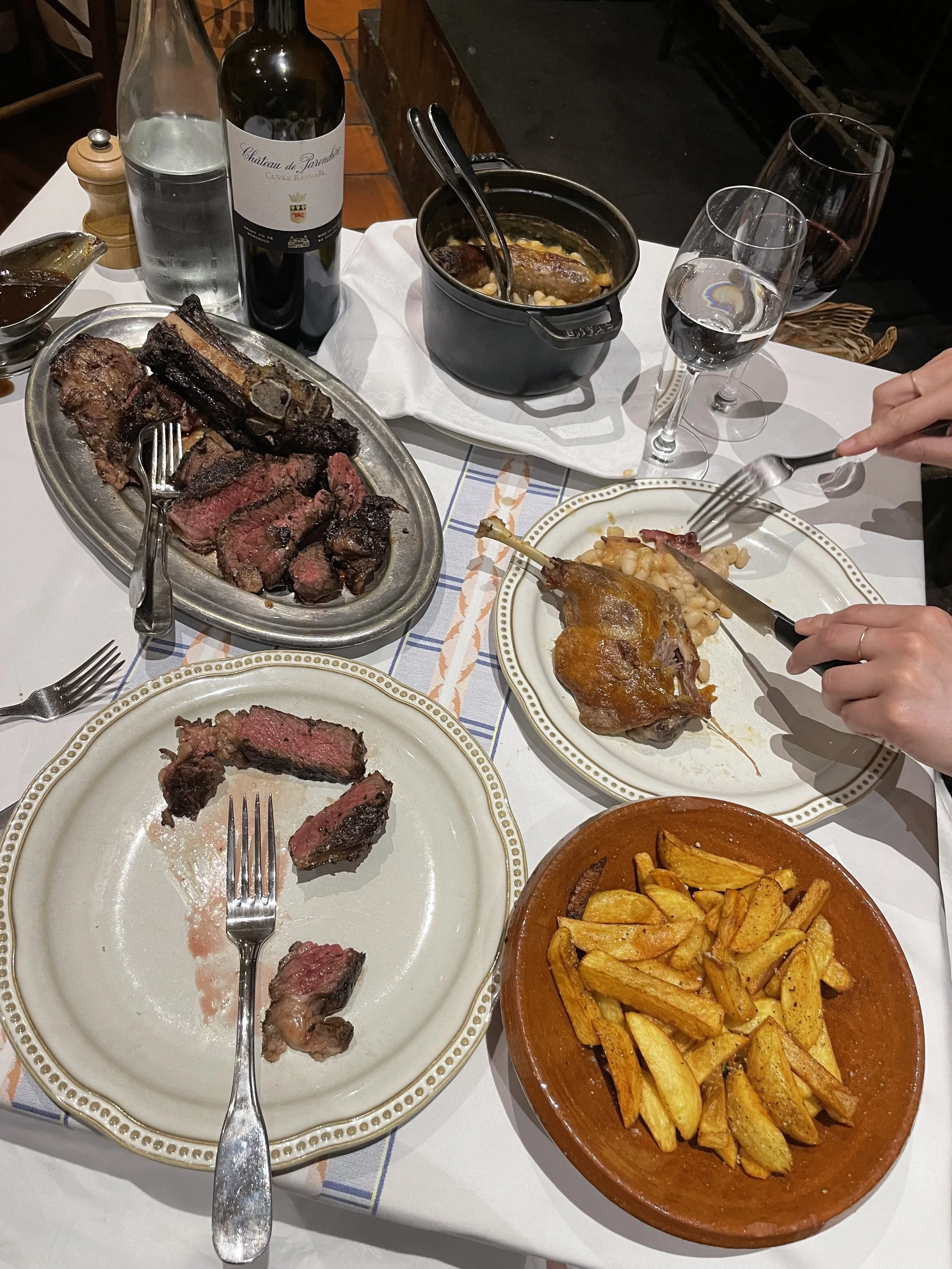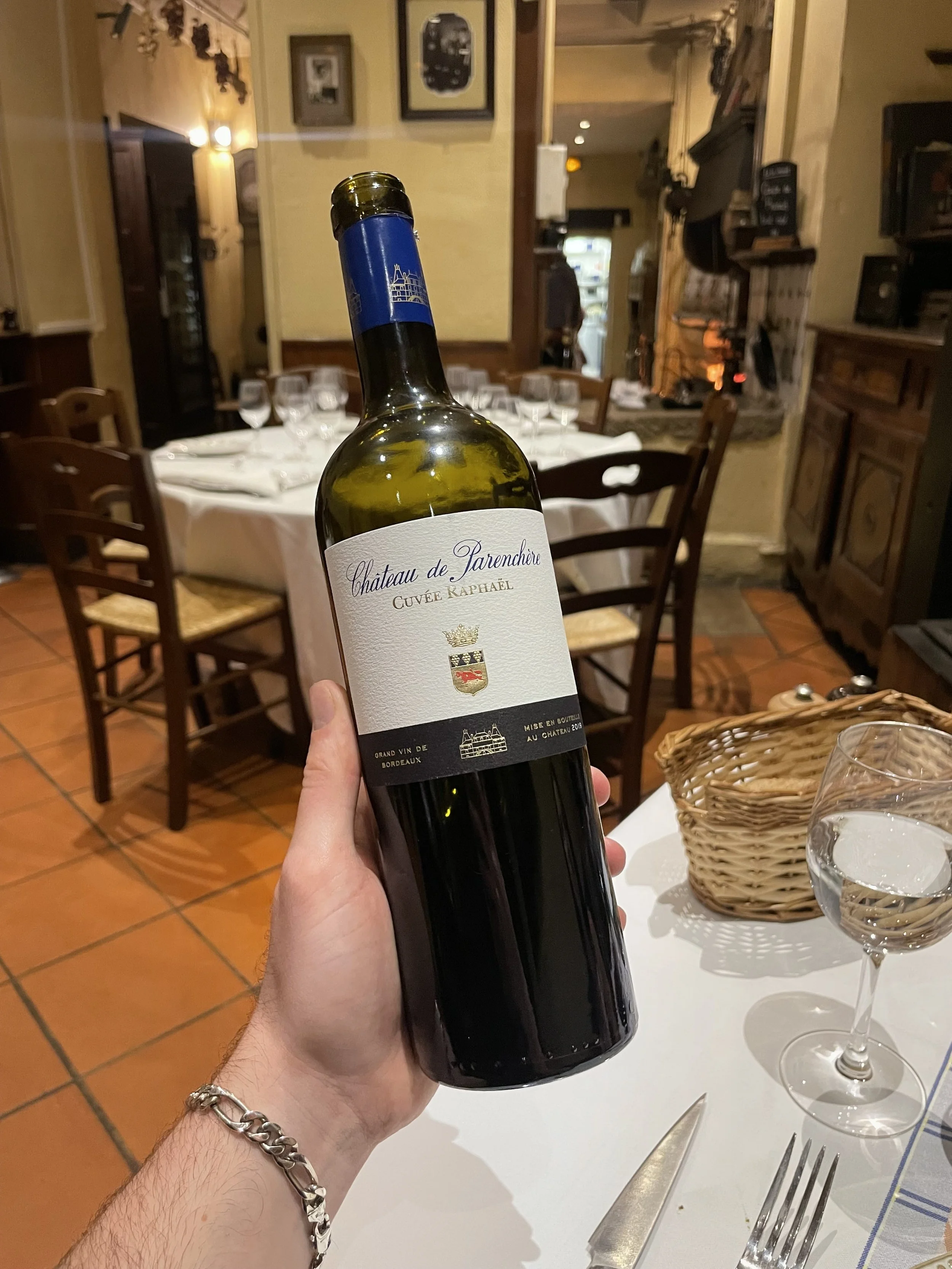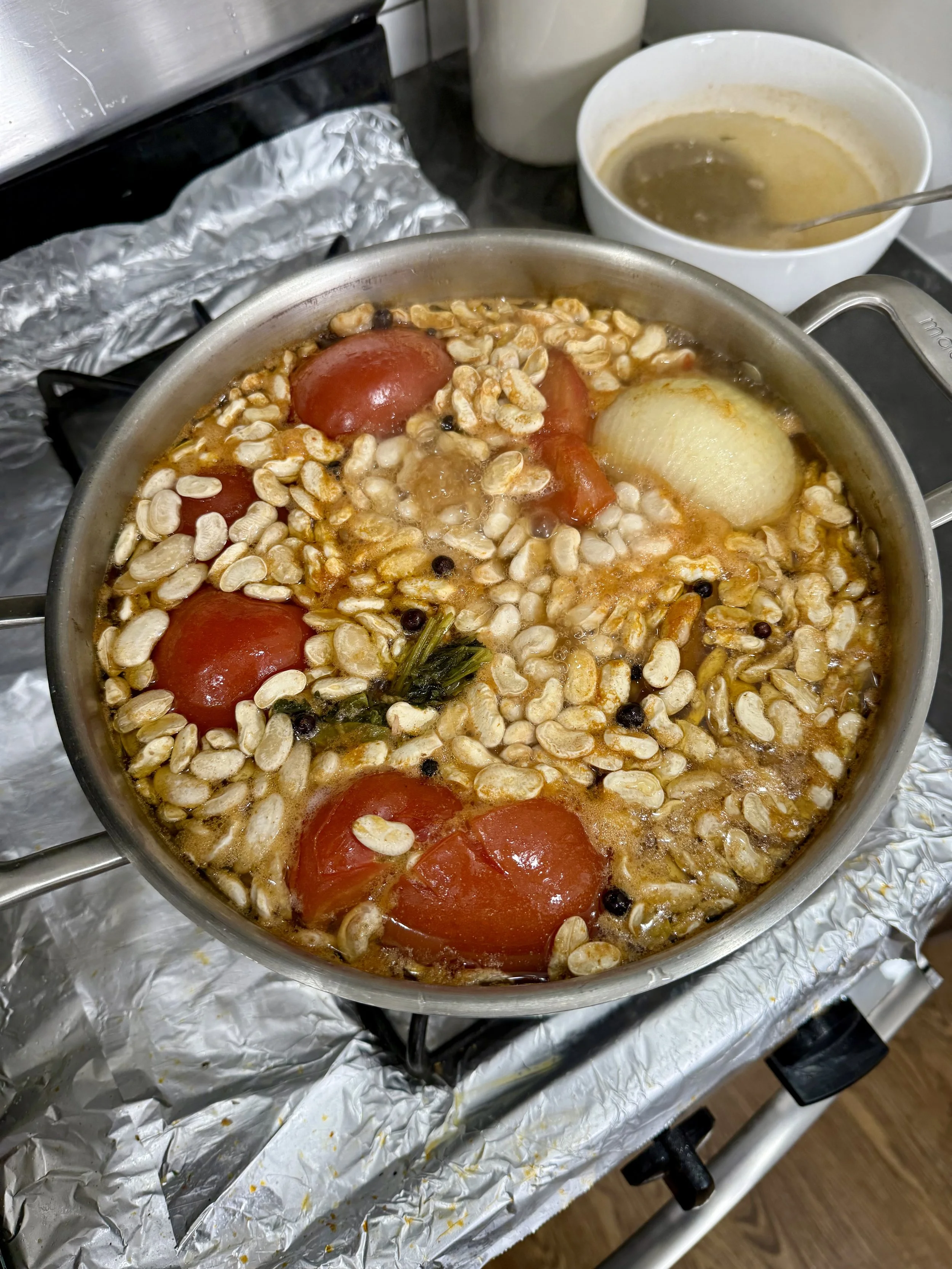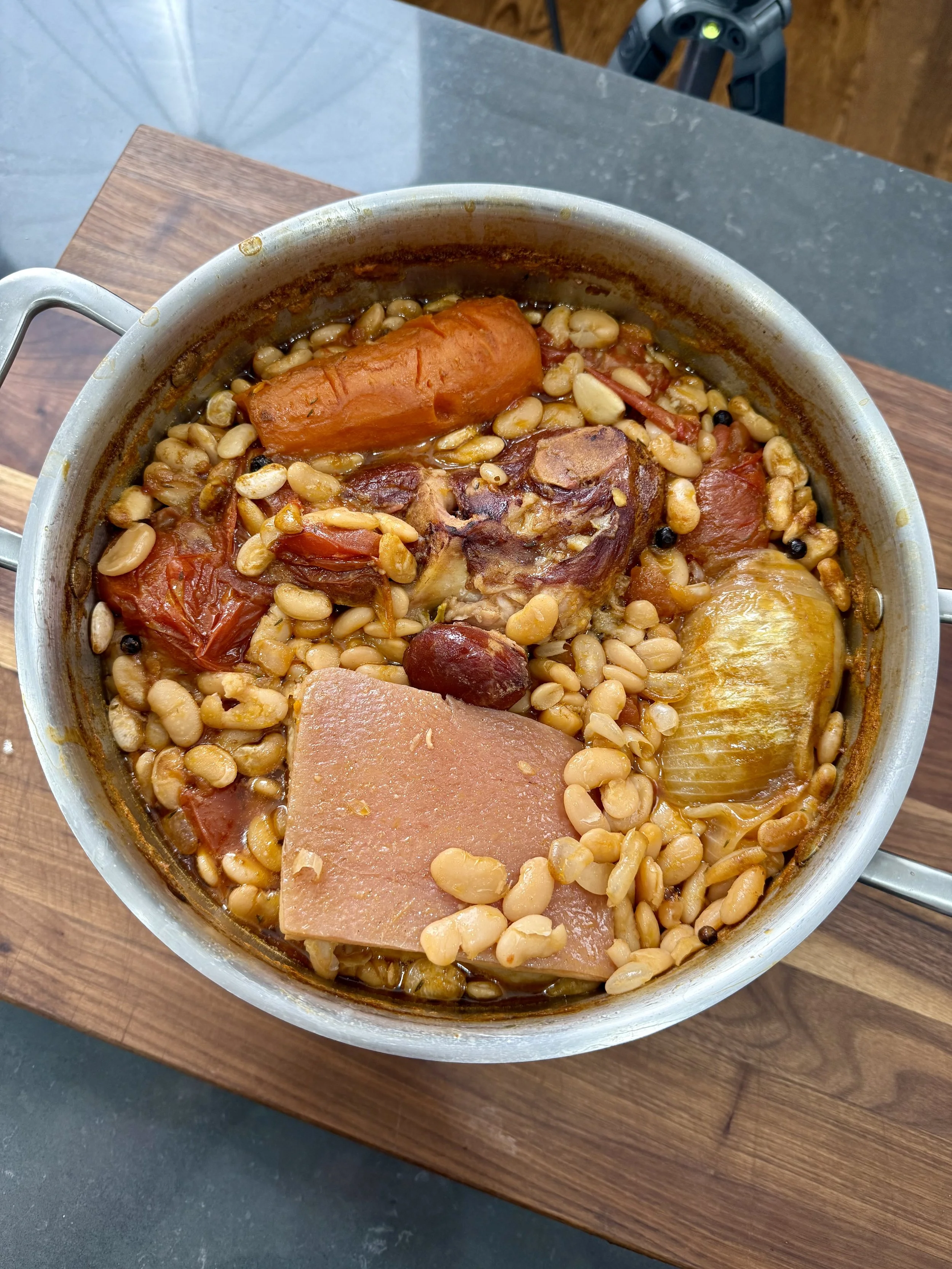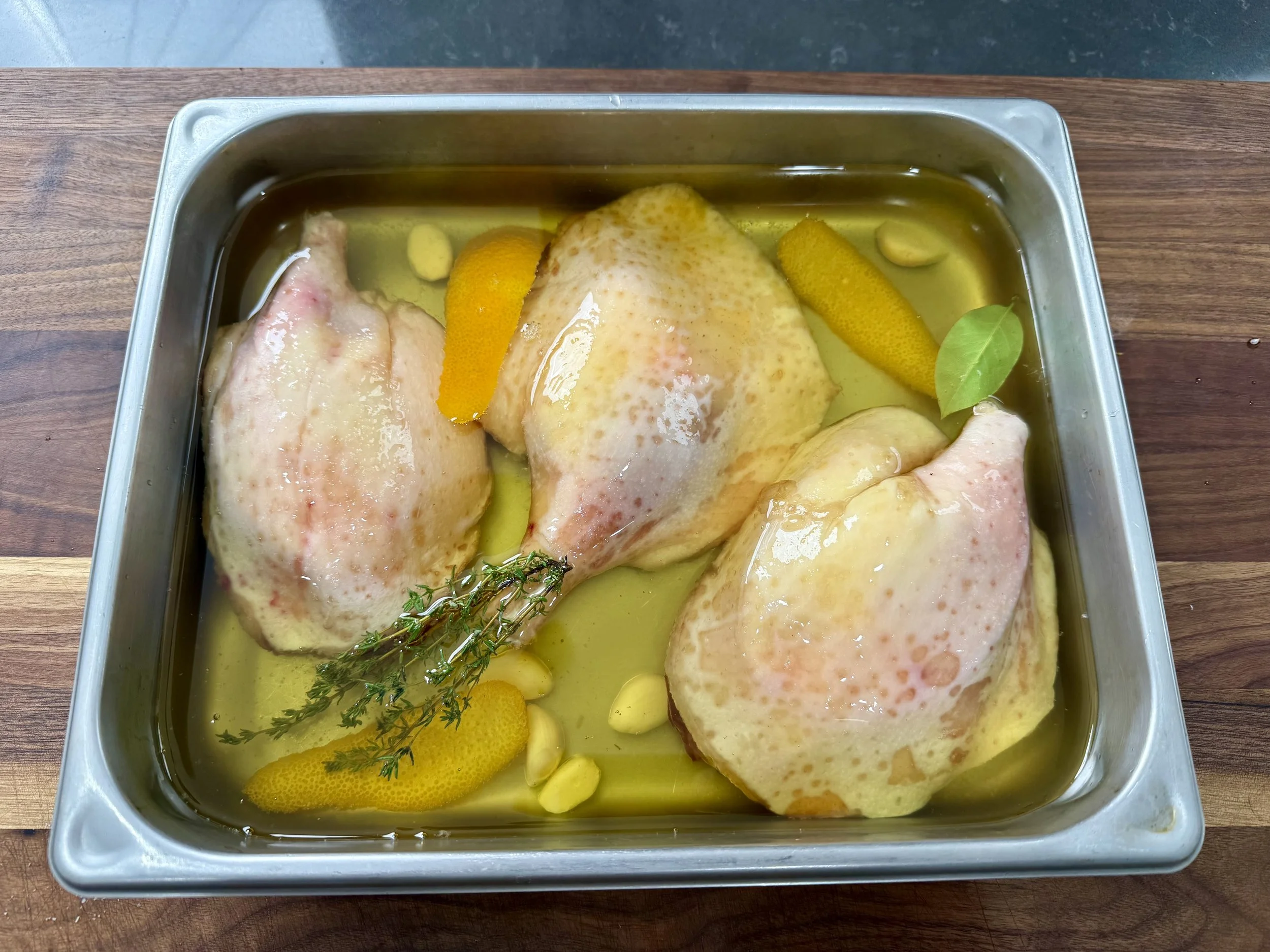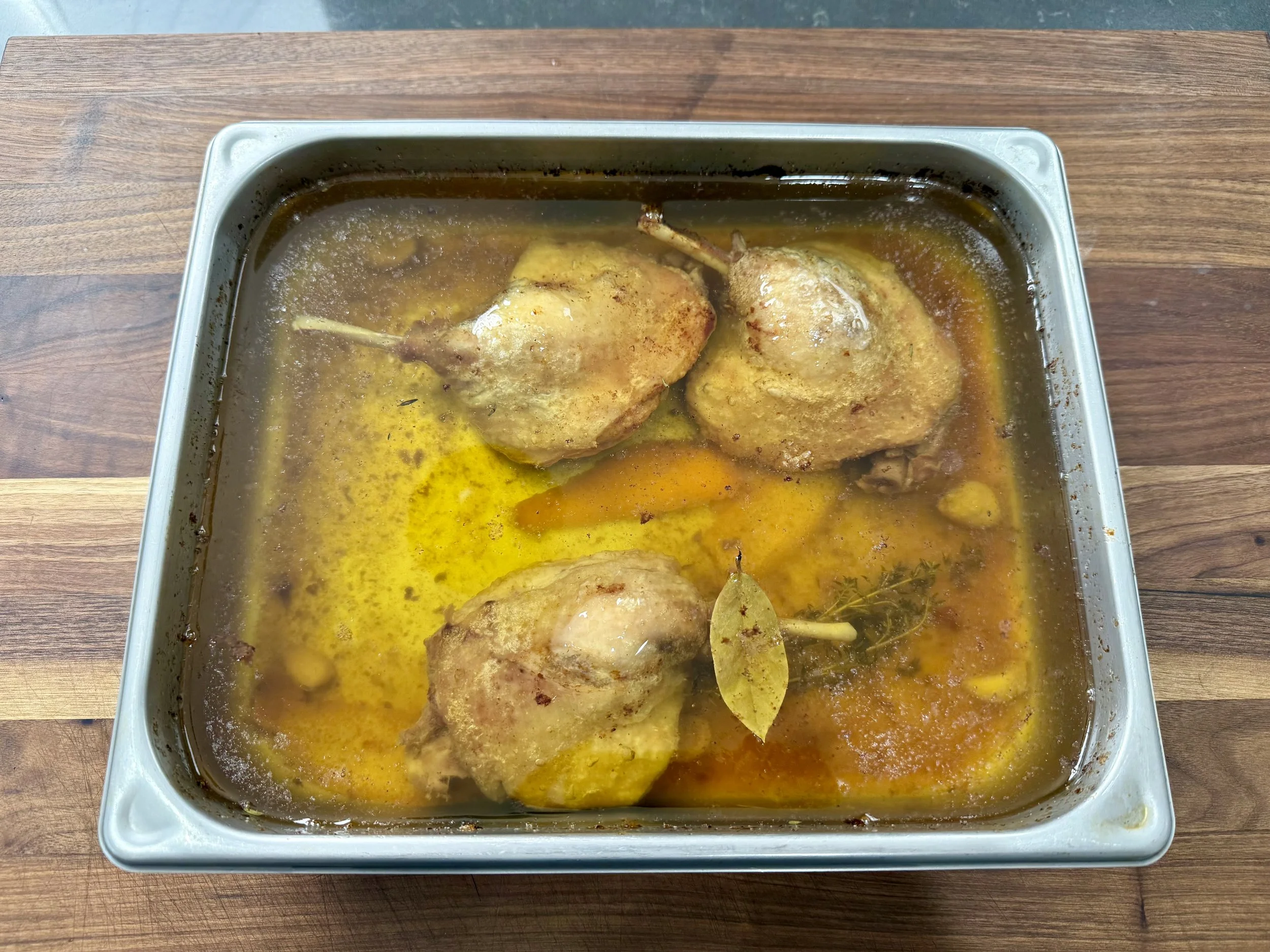Cassoulet (French Beans & pork)
Many cultures have a pork and bean dish, and in France, that dish is cassoulet. At its core, cassoulet is peasant food—traditionally made by working-class French families using whatever meat scraps they had on hand. While some of its ingredients are now considered pricey, it was once a humble, practical dish built around staples like beans, vegetables, and duck confit, which was often stored in cellars for the winter months. Cassoulet is one of my favorites. It takes time, but it’s not difficult to make. While we might not have the same free time as people did before electricity, it's worth the effort. Make it once, and I guarantee you’ll be hooked. 🤘🏻 Adam
P.S. If you liked this video, check out the time that I made everything for the cassoulet from scratch (including the Toulouse sausages).
This is La Tupina in Bordauex. The ambiance was incredible and the food even better. This was the most memorable meal of our trip.
The beans before (left) and after (right).
The duck confit before (left) and after (right).
A “Cassole” is what cassoulet is traditionally cooked in, but any deep and wide pot will do. The cassole is made of earthenware (terracotta) that’s been glazed over. Like a nice dutch oven, it’s one of those dual-purpose cooking/serving pieces — it’s gorgeous enough. They’re tough to come by in The States but, if you’re a committed cassoulet king/queen, you can order one from Europe on sites like eBay or Esty (though it’ll cost you a pretty penny).

Cassoulet (French Bean & Meat Casserole)
Ingredients
Instructions
- Tie the herb sachet together and set aside.
- Add the beans and all other ingredients including the herb sachet, except for the salt, to a large dutch oven. Simmer the beans until tender, about 2-3 hours. Be sure to skim off the scum that floats to the top during the process.
- Keep the cooked beans and all aromatics in the pot. Let it cool slightly then store in the fridge overnight.
- Submerge the duck legs in fat and cook in the middle rack at 300F for 2-3 hours, or until the duck legs are tender.
- Remove from the oven and let cool to room temperature. Store in the fridge overnight.
- Over medium-high heat, melt in the duck fat and saute everything in a hot pan until browned, but not cooked through. Slice the sausage into pieces and keep the ribs whole. Set aside.
- Preheat the oven to 400F.
- Remove beans and meat from the pot then discard the remaining aromatics but reserve the cooking liquid. Shred the meat by hand.
- Smear duck fat on the inside of the cassoul. Add all of the reserved the meat including the additional meat, but not the duck confit
- Pour enough reserved cooking liquid to reach the “shoulders” of the beans. Top with ribbons of duck fat.
- Bake the cassoulet on the middle rack of the preheated oven for 30 minutes. After 30 minutes, remove the cassoulet from the oven and use a spoon to “crack” and press down the top layer of beans to rehydrate them. Repeat this process for a total of 3-4 presses until a dark crust forms.
- Remove the duck legs from the fat and crisp up the confit in a hot oven for 10-15 minutes. Lay the crisped confit on top the cassoulet and serve in the dish.
- To serve, spoon some cassoulet onto a plate and garnish with a dash of red wine vinegar. Serve with a frisee salad and sharp vinaigrette and a full bodied, teeth-staining red wine.
Adam's Notes
- Adding vinegar to beans while cooking can enhance their texture and flavor. The acidity slows down the breakdown of pectin in the bean skins, preventing them from getting too mushy. This is especially useful if you want beans to hold their shape.
- Salt your beans at the beginning of cooking for the best texture and flavor. The old myth that salting early makes beans tough has been debunked—salting early actually helps season them more evenly and prevents them from becoming bland.
- It's easiest to do this over the course of 2 days. On day 1, prep the beans and duck confit. On day 2, sear the additional meat then build and bake the final cassoulet.
- Cassoulet freezes well. Shred the duck confit off the bone and fold it into the remaining cassoulet. Store everything in a sealable container or a bag then freeze it. The frozen cassoulet can be thawed and eaten within 3-4 months.
Disclaimer: I earn commission income with qualifying purchases made through Amazon’s Affiliate program and other affiliate links in this description.


